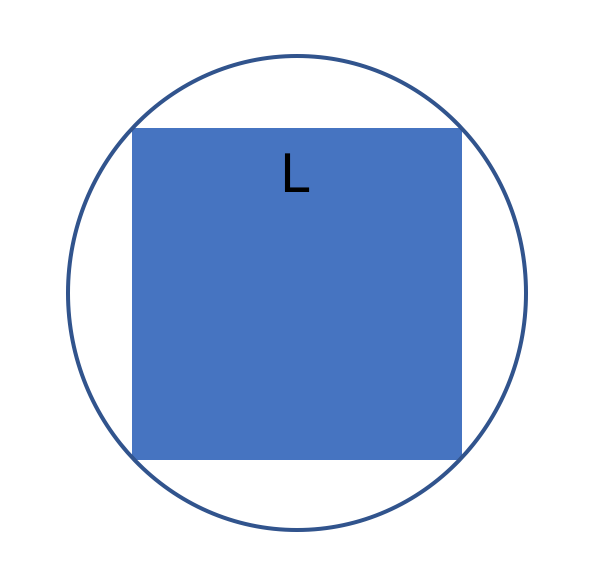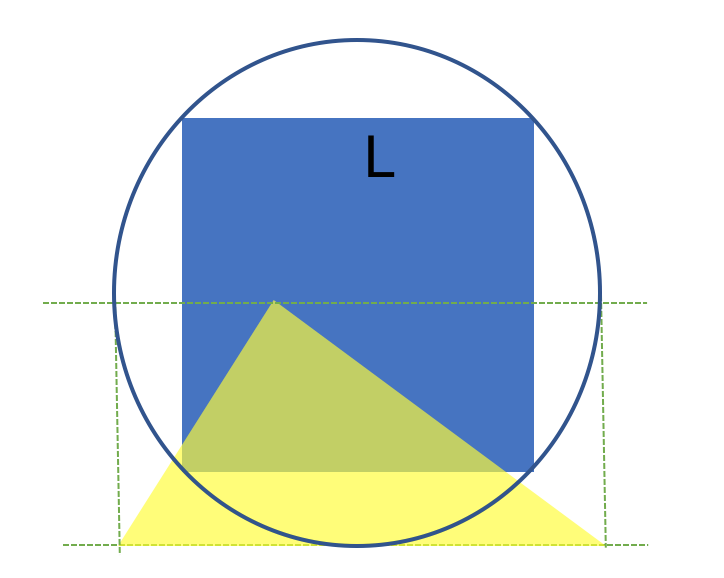Pierino and the Riddle of the Papyrus
Pierino, a well-known character of Italian short stories, has never been a math-enthusiast in his educational career... But he has decided to change his attitude, and he wants to impress his Math teacher at school. He wants to do something that has never done before: solve a puzzle that was found on an ancient Egyptian papyrus...
Here is the riddle.
"An L-sided square is inscribed in a circumference:

Given the following geometric construction:

the area of the yellow triangle is... "
Pierino is pretty sure about the answer, but he does not want to miss this opportunity to impress his school teacher, so he is going to give you (the only math freak that he knows) a call in a minute, sort of "Phone-a-friend" lifeline from the Millionaire ... Will you be able to help him?
This section requires Javascript.
You are seeing this because something didn't load right. We suggest you, (a) try
refreshing the page, (b) enabling javascript if it is disabled on your browser and,
finally, (c)
loading the
non-javascript version of this page
. We're sorry about the hassle.
The diameter of the circumference is 2 × L , which is also the base of the triangle. Thus the area of the triangle is 2 L 2